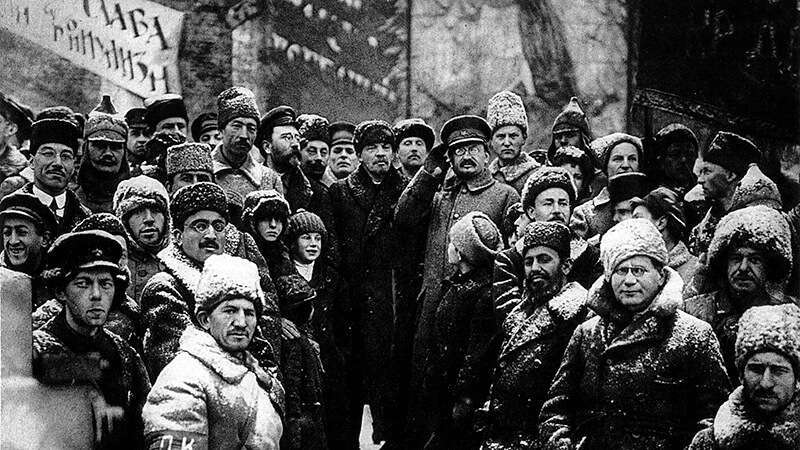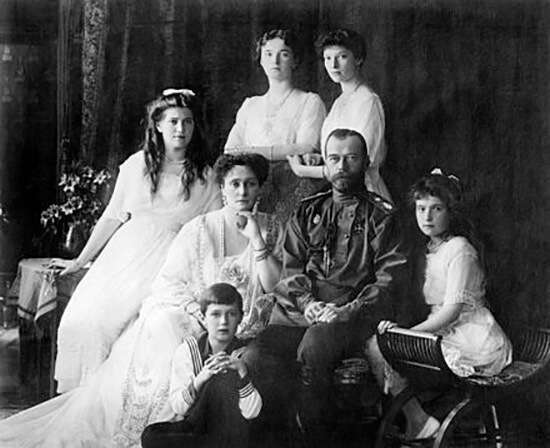A walk through the history of disinformation: Operation Confidence

The term disinformation has become part of our everyday vocabulary. Nobody is surprised by it, because in recent years we hear it all the time: on television, in a café talking to friends, at work, in congressional sessions, on Instagram, on Facebook, in speeches, etc.
And this, which may seem positive, has created some confusion which, in turn, has triggered a loss of perspective on how relevant "disinformation" really is and how much weight a disinformation operation can have on the democratic, political, social or economic stability of a country or an organisation. Therefore, in today's article we will take a brief look at the history of "disinformation"; looking at what it really means and illustrating one of the most prominent disinformation operations carried out by intelligence units, "Operation Confidence".

We are not going to spend too much time explaining what we are talking about when we refer to disinformation, as other colleagues have dealt with this topic in articles on the dynamics of disinformation and the challenges it poses for intelligence analysis.
As a quick reminder, let's look at what the RAE says about the term "disinformation":
1. To give information that is intentionally manipulated to serve certain ends.
2. To give insufficient information or to omit it.
In short, as a generalisation, we could say that disinformation consists of manipulating information to achieve specific objectives.
Nowadays it seems that objective facts are losing importance and that supposed "truths" are justified in an emotional way, but is this really the case, is it something new?
As early as 1886, Nietzsche said "there are no facts, only interpretations". And as with almost any human experience, with disinformation we should look at the history of this tactic and its relationship with intelligence units in order to understand the current situation. To do so, we will use as a roadmap a book that I recommend if you are interested in this topic: "Disinformation and Political Warfare" by Thomas Rid, who considers that this modern era of disinformation began in the early 20th century and can be divided into "four waves".

1. The inter-war period, in the Great Depression, when radio was transforming the journalism of the time, saw the emergence of influence operations that could be considered, at the time, as "innovative and twisted".
2. In the post-World War II era when intelligence agencies professionalised disinformation tactics and influence operations. In the midst of the Cold War, disinformation was used as a weapon to exacerbate tensions, a weapon of so-called "political warfare".
3. During the 1970s, the management and resources of disinformation tactics were refined; they became more active tactics.
4. The fourth wave, according to Thomas Rid, would begin in 2010 and would be the one we are currently in, in which "active disinformation measures" have been reinforced by the boom of the internet and new technologies.
Before continuing with what is considered to be one of the first disinformation campaigns, belonging according to the author to the first wave, it is worth explaining what an "active measure" is. Active measures are those that are used to hinder an opponent's attempts to gain information. Such measures are very common when it comes to counterintelligence work.
THE FIRST DISINFORMATION OPERATIONS
With all of the above, I just wanted to emphasise that disinformation is not a new phenomenon and that to understand where we are today we need to provide context and understand how tactics that began many years ago have been changing shape and evolving to adapt to new realities.

I think nothing would be more explanatory than to choose one of the accounts of disinformation operations compiled by Thomas Rid. One of the earliest known major disinformation operations: Trust.
We could devote a series of articles solely to this disinformation campaign that pioneered the creation of a unit dedicated solely to disinformation, and I encourage anyone who finds this summary interesting to dive independently into this gripping tale with hundreds of edges.
In 1921, after the Russian civil war, many conservatives and anti-communists emigrated to other countries in Europe and Asia; and many of the emigrants sought to restore the monarchy. From the Soviet Union these émigré groups were seen as a threat and it was feared that they were organised and plotting to overthrow the new government.
How did the operation come about?
In this context, the Bolshevik organisation known as "the Czech" and its leader, who in 1921 intercepted a letter from an insurgent in Tallinn addressed to the Supreme Monarchist Council in Berlin, became important in subverting these anti-revolutionary movements of the monarchists. This letter praised a certain Yakushev, a former official of the Tsar who was then continuing his work as a civil servant for the new government. The insurgent explained to the Monarchist Council that Yakushev shared his vision and believed that the monarchist organisation in Moscow was the one who should give orders to organisations in the West in subversive activities.

Thus, the contents of the letter inspired the Czechs to elaborate their plan against the monarchists: to create a fake monarchist organisation, with Yakushev as its leader, to deceive the organisations in the West. But to carry out their plan they needed Yakushev on their side, so they only had to arrest and persuade the official for several weeks until he agreed to collaborate with this new operation, which they called "Confidence" and whose director would be Artuzov, head of Czech counter-intelligence.
What did "Confidence" consist of?
The operation was based on the creation of a fake "Monarchist Organisation of Central Russia" (MORsT) with hundreds of fake members. Yakushev was to be the leader and representative of MORsT to the rest of the monarchist organisations abroad and in his role he had two priorities; firstly, to mislead the émigré monarchists about the situation in the Soviet Union and secondly, to mislead Western intelligence services about the military capability of the USSR.
Since the beginning of Operation Confidence, such was the amount of misleading content that the Czech (and its later successor OGPU) managed to move that in 1923 an office for managing disinformation was created, which produced misleading information aimed at foreign intelligence services with the aim of thwarting possible intentions of military intervention in the USSR.
Because of the scale and impact of this operation, it is worth reviewing some of the most relevant actions carried out as part of "Confidence":
Deception of monarchist organisations abroad:
One of the first steps they took was to send Yakushev to meet with the Monarchist Council in Berlin. It was important for him to win their confidence and convince them that a counter-revolutionary sentiment was beginning to emerge in Russia that turned its back on the Bolsheviks, that these anti-communist forces were already in the administration itself, and that they could gather information and pass it on to the émigrés without the need for intervention from abroad. And this first step was successful, Yakushev returned to Russia as an ally in the eyes of the Monarchist Supreme Council in Berlin. They believed that Takushev and the so-called Russian monarchist organisation would work for the downfall of the Bolsheviks from within and facilitate the restoration of the Monarchy under Duke Nicholas Nikolayevich. Later, with the same speech, he managed to win the confidence of the Duke himself.

Deception of intelligence services:
Another of its successful activities was related to the deception of Western intelligence services. The GPU suspected Estonian spies of intercepting Yakushev's letters to the Supreme Council via the Estonian mission in Moscow and included in the letters false information about the USSR's military potential, with the intention of keeping potential foreign enemies at bay.
Attracting enemies:
But undoubtedly one of the most remarkable operations concerns the assassination of SIS (predecessor of MI6) agent Sydney Reilly whom MOTsR lured to Russia under the pretext of the possibility of collaboration with the British secret services, in order to arrest and assassinate him. After this, in an attempt to avoid damaging the credibility of the fake royalist organisation, they faked a shootout at the Finnish border and planted three bodies in an attempt to claim that two MOTsR agents and Reilly had died trying to cross the border, but rumours spread that MOTsR was a fake organisation under the command of the Bolsheviks.
Disinformation within the country:
In the face of rumours that could shake all the work of "Confidence" the operation went a step further and at the hand of Yakushev the MOTsR invited Vasily Shilgin, a journalist and writer considered anti-Bolshevik to visit the country, to look for his son who was missing and to see that there was a strong dissidence composed of monarchists and that Russia was once again a safe country for them.
During his trip, everything Shulgin observed was carefully planned by the Confidence agents themselves, who also accompanied him, making him believe that they were political dissidents. After this trip, Shulgin wrote a book "The Three Capitals", which helped to spread and establish the ideas that Operation Confidence had been trying to spread at home and abroad for years.
In 1927 the Polish intelligence services became suspicious of MOTsR due to the poor quality of the leaked information and decided to ask them for the Red Army's plans in the event of a possible war with Poland to compare them with the authentic plan they had obtained by other means. After the deception was proven to be a hoax, they alerted the other Western intelligence agencies and cut off relations with the fake dissidents, which meant that Operation Confidence had lost all credibility and its entire infrastructure was soon dismantled.
By then, the Soviet Union had strength as a nation, control over dissidents and information about other intelligence services, and this was partly thanks to "Operation Confidence".
As we have seen with the example of Operation Confidence, disinformation and fake news are not a contemporary phenomenon born out of the internet, and it is considered that after the First World War the use of these tactics to manipulate or mobilise people, gain support in complicated situations or even monitor adversaries became professionalised. The techniques and technologies were different and have since been refined and adapted, but the goal was the same: the creation or shaping of information to achieve specific objectives.
Looking back in history, we can see that controlling and identifying disinformation is a complicated process that in recent years has become even more difficult due to the speed and virality with which information moves, as well as the difficulty of tracing the origin of such information.
Such is the importance of this phenomenon that Spain has had an Action Procedure against disinformation in place for years, and in December 2021 the government announced that disinformation would be elevated to the category of "national risk" -equating it to other classic risks such as terrorism or organised crime- as there is concern about campaigns by international actors (state and non-state) aimed at polarising society and undermining its confidence in institutions.
Undoubtedly, officially recognising the risk that disinformation poses to a country's stability is a milestone, but there is still much work to be done in this regard, both by governments and by the population itself. We will surely witness the development of this work in the coming years, and we will see what strategies are proposed by the institutions to combat this national risk.
Elena Contreras Saura
Sec2Crime contributor
BIBLIOGRAPHY
Álvarez, J. (2021, 2 agosto). Operación Trust, el ingenioso montaje bolchevique para capturar espías contrarrevolucionarios. La Brújula Verde. https://www.labrujulaverde.com/2021/08/operacion-trust-el-ingenioso-montaje-bolchevique-para-capturar-espias-contrarrevolucionarios
Burgueño, J. M. (2020, 2 junio). Historia National Geographic. historia.nationalgeographic.com.es. https://historia.nationalgeographic.com.es/a/fake-news-compania-peligrosa-a-largo-historia_15349
Contrainteligencia –. (2016, 29 marzo). Inteligencia. https://lcinteligencia.wordpress.com/category/contrainteligencia/
Fisher, M. (2021, 16 agosto). El oscuro negocio de la desinformación por encargo. The New York Times. https://www.nytimes.com/es/2021/07/27/espanol/desinformacion-mexico-venezuela.html
Piña, R. (2021, 28 diciembre). El Gobierno eleva la desinformación a la categoría de «amenaza» para la seguridad del Estado. EL MUNDO. https://www.elmundo.es/espana/2021/12/28/61cb41befc6c83a5638b45cc.html
Posetti, J., & Matthews, A. (2019, 5 junio). Una Breve Guía de la Historia de las «Noticias Falsas» y la Desinformación: Un Nuevo Módulo de Aprendizaje por ICFJ. International Center for Journalists. https://www.icfj.org/news/una-breve-guia-de-la-historia-de-las-noticias-falsas-y-la-desinformacion-un-nuevo-modulo-de
Rid, T., & Rueda, F. Y. (2021). Desinformación y guerra política: Historia de un siglo de falsificaciones y engaños (Letras de Crítica). Editorial Crítica.
Sánchez, G. L. (2014, 1 diciembre). La masiva maniobra de espionaje que permitió el nacimiento de la URSS. abc. https://www.abc.es/archivo-historia-abc/20141201/abci-operacion-confianza-cheka-urss-201411301734.html
Savino, G. (2021, 5 febrero). Vasily Shulgin (1878–1976): The Grandfather of Russian Nationalism. Illiberalism.Org. https://www.illiberalism.org/vasily-shulgin-the-grandfather-of-russian-nationalism/
Wasielewski, P. (2021, 12 diciembre). Modern Russian Statecraft: Neither New nor Hybrid, Part One | Small Wars Journal. Small Wars Journal. https://smallwarsjournal.com/jrnl/art/modern-russian-statecraft-neither-new-nor-hybrid-part-one
